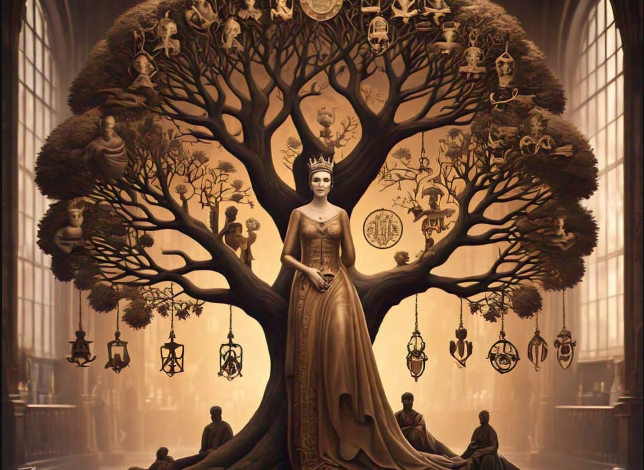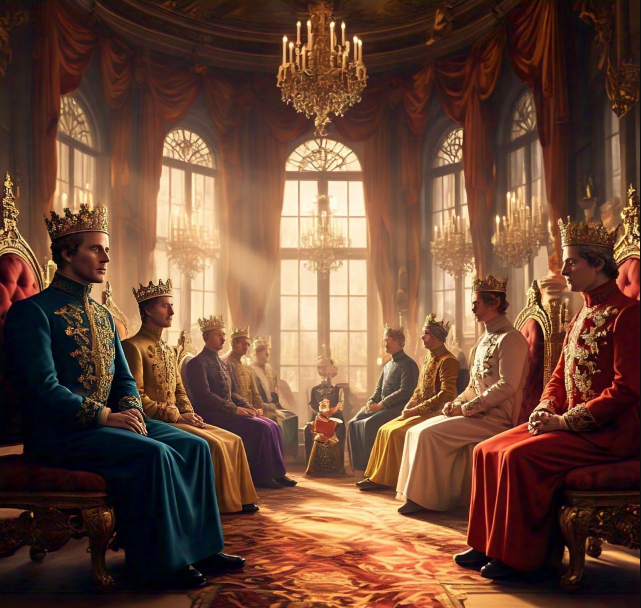Understanding the Royal Family Tree: A Journey Through Generations

Table of Contents
The Royal family tree is a fascinating history of kings, queens, princes, and princesses. It traces the line of succession and shows how the royal family has changed over time. The family tree helps us understand how royal bloodlines pass from one generation to the next, all the way from early monarchs to the current royal family.
Exploring the royal family tree is not just about knowing who’s related to whom, but also about discovering important events and milestones that have shaped the country’s history. From royal marriages to significant decisions, the family tree tells a story of power, duty, and legacy. It’s like a time machine that helps us learn about the past and see how everything is connected.
What is the Royal Family Tree? Understanding Its Structure
The royal family tree is a chart that shows how royal families are connected through generations. It’s like a big family map, starting from the earliest kings and queens to the current ones. This tree helps us see who is related to whom, how they became monarchs, and who might be next in line to the throne.
Each branch of the tree represents a family, and the branches show how they’re connected. The royal family tree helps us understand the relationships between monarchs, their children, and their descendants. This structure is important because it shows the line of succession and who inherits the crown.
The tree starts with the very first monarchs and stretches to the present. In modern times, it also helps us understand royal duties, traditions, and how monarchies work in today’s world.
How the Royal Family Tree Shows the Line of Succession

The royal family tree plays an important role in showing the line of succession. This means it helps us understand who becomes the next ruler of a country. Traditionally, it follows a pattern where the eldest child of a king or queen is next in line.
Succession in the royal family tree isn’t just about who is the oldest. It also includes rules about gender, marriage, and other factors. For example, in recent years, many countries changed the rules to ensure that sons and daughters have equal chances to inherit the throne.
By looking at the family tree, we can learn about the journey of the crown from one monarch to the next, all the way through history.
Exploring the Royal Family Tree: Key Historical Events and Changes
The history of a royal family tree is full of important events that changed the course of a country’s monarchy. Kings and queens often made major decisions about land, power, and alliances, which affected future generations.
One major change was when monarchies decided on new rules for who would inherit the throne. Some countries made changes that allowed daughters to inherit, while others kept their old traditions. These changes are recorded in the family tree, showing how history shaped the royal bloodlines.
Royal marriages were also a key part of the royal family tree. Many royal families formed strong connections with other countries through marriage, which had a lasting impact on their history. This created new branches on the family tree, connecting different monarchs across the world.
Famous Monarchs and Their Roles in the Royal Family Tree

Throughout history, several famous monarchs have shaped the royal family tree. These monarchs are remembered not only for their rule but also for their impact on the world. For example, Queen Elizabeth I of England helped expand the British Empire, and King Henry VIII is remembered for his dramatic changes to religion and family life.
Each of these famous monarchs played a key role in the development of the family tree. Their decisions helped shape the future of their royal line and affected generations of rulers to come. Their legacies are carefully recorded in the tree, helping us understand their influence.
Other well-known figures, like King George VI and Queen Victoria, also have important places in the royal family tree. They each made their mark on history in unique ways.
Conclusion
In conclusion, the royal family tree is a special way to learn about kings, queens, and their families throughout history. It shows how they are all connected and helps us understand the important role they played in shaping their countries. From past monarchs to today’s leaders, the family tree tells the story of power, tradition, and history.
By exploring the royal family tree, we can see how these families grew, changed, and adapted over time. It’s not just about the past; it helps us understand the monarchy today and its place in modern society. Understanding the royal family tree is like unlocking a treasure chest of history and traditions.
FAQs
Q: What is the royal family tree?
A: The royal family tree is a chart that shows the connections between kings, queens, and their descendants over generations.
Q: Why is the royal family tree important?
A: It helps us understand who will inherit the throne and shows how different monarchs are related.
Q: Can a woman inherit the throne in the royal family?
A: Yes, in many countries, women can inherit the throne if there is no male heir.
Q: How far back does a royal family tree go?
A: A royal family tree can go back many centuries, depending on the history of the monarchy.
Q: Are royal family trees the same in every country?
A: No, each country has its own royal family tree, with different rules and traditions.




